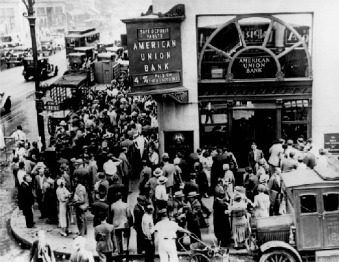Their Eyes Were Watching God
History behind the Novel...

http://cf.juggle-images.com/fit/white/600x600/wg-great-depression-2.jpg
During the late 1920s through the late 1930s, the Great Depression affected all American workers, especially Southern farmers who did not enjoy the prosperity of northern industrial centers. African American farmers were, however, hit much harder than the white population. Many relief organizations discriminated by race, not giving help to some and giving lower amounts of aid to others. This plight was seen in Hurston’s novel as migrant workers, “people ugly form ignorance and broken from being poor,” came to the Everglades to pick beans in search of a better life.
After World War I, many returning African American soldiers found that opportunities, which they had hoped would be available, were not there. Many moved South where they had little chance of moving out of poverty while others migrated to the North gaining some, but few, working positions. Soon, racial prejudice and injustice erupted throughout the North as many whites felt that the black were taking jobs away form them. Black leaders, including Booker T. Washington and W.E. B Dubois, fought for their black peers in government. These new efforts were centered in Harlem, New York, a place where a large percentage of migrating black ended up. TH new energy there charged jazz musicians, artists, and writers to be involved in the thriving black culture. It soon became known as the Harlem Renaissance. The movement confronted racial injustices by depicting them in their art. By doing so, millions of people all over the world recognized this injustice and sought its end. Zora Neale Hurston, the book’s author, was very involved in this campaign, writing multiple books and poems, including Their Eyes Were Watching God, that illustrated the racial tension that prevailed in the South.
After World War I, many returning African American soldiers found that opportunities, which they had hoped would be available, were not there. Many moved South where they had little chance of moving out of poverty while others migrated to the North gaining some, but few, working positions. Soon, racial prejudice and injustice erupted throughout the North as many whites felt that the black were taking jobs away form them. Black leaders, including Booker T. Washington and W.E. B Dubois, fought for their black peers in government. These new efforts were centered in Harlem, New York, a place where a large percentage of migrating black ended up. TH new energy there charged jazz musicians, artists, and writers to be involved in the thriving black culture. It soon became known as the Harlem Renaissance. The movement confronted racial injustices by depicting them in their art. By doing so, millions of people all over the world recognized this injustice and sought its end. Zora Neale Hurston, the book’s author, was very involved in this campaign, writing multiple books and poems, including Their Eyes Were Watching God, that illustrated the racial tension that prevailed in the South.
Implications of time period...

The 1930s was a turbulent time for African Americans in the United State. Racism was especially strong in the Southern states although groups like the Ku Klux Klan were in decline. In the North, racial prejudice was also evident as many blacks migrated to cities like Harlem, New York—the “new Mecca for negroes” as it became known. As a result, the Jim Crow Laws ensured an abundance of racism and segregation. Blacks could not got to the same schools, eat at the same restaurants, drink from the same fountains, or shop at the same stores as whites.
Furthermore, during the 1930s the U.S was finally crawling out of the Great Depression. President Roosevelt’s “New Deal” programs helped with this recovery, providing jobs for both whites and blacks. Some included the Federal Music Project, the Federal Writers Project, and the Federal Theatre Project. These helped further influence the Harlem Renaissance, a flowering of African American intellectual life, which had started around 1919. The Harlem Renaissance grew out of the changes that had taken place in the African American community since the abolition of slavery. Social changes that occurred after World War I and the industrialization of the North helped this movement thrive. Huston’s novel embodied the movement’s theme of racial pride that came to represent the idea of a “New Negro”, who through intellect and exemplary character could challenge the racism and stereotypes of the nation.
Furthermore, during the 1930s the U.S was finally crawling out of the Great Depression. President Roosevelt’s “New Deal” programs helped with this recovery, providing jobs for both whites and blacks. Some included the Federal Music Project, the Federal Writers Project, and the Federal Theatre Project. These helped further influence the Harlem Renaissance, a flowering of African American intellectual life, which had started around 1919. The Harlem Renaissance grew out of the changes that had taken place in the African American community since the abolition of slavery. Social changes that occurred after World War I and the industrialization of the North helped this movement thrive. Huston’s novel embodied the movement’s theme of racial pride that came to represent the idea of a “New Negro”, who through intellect and exemplary character could challenge the racism and stereotypes of the nation.

